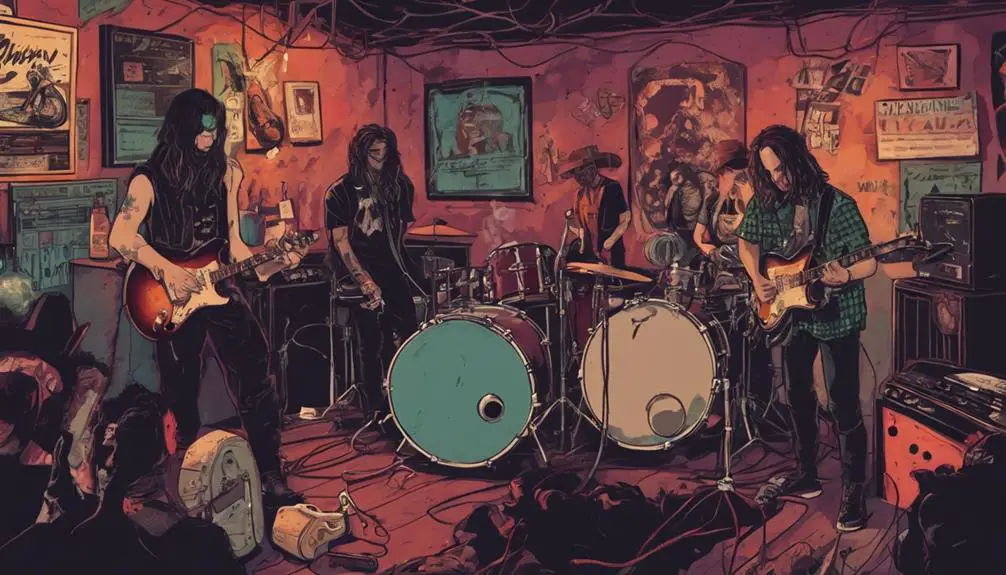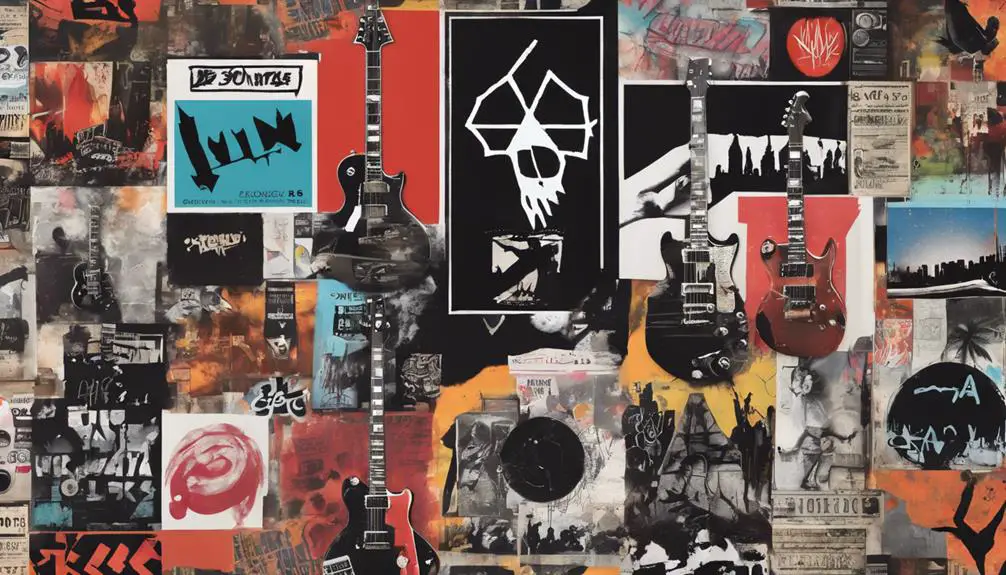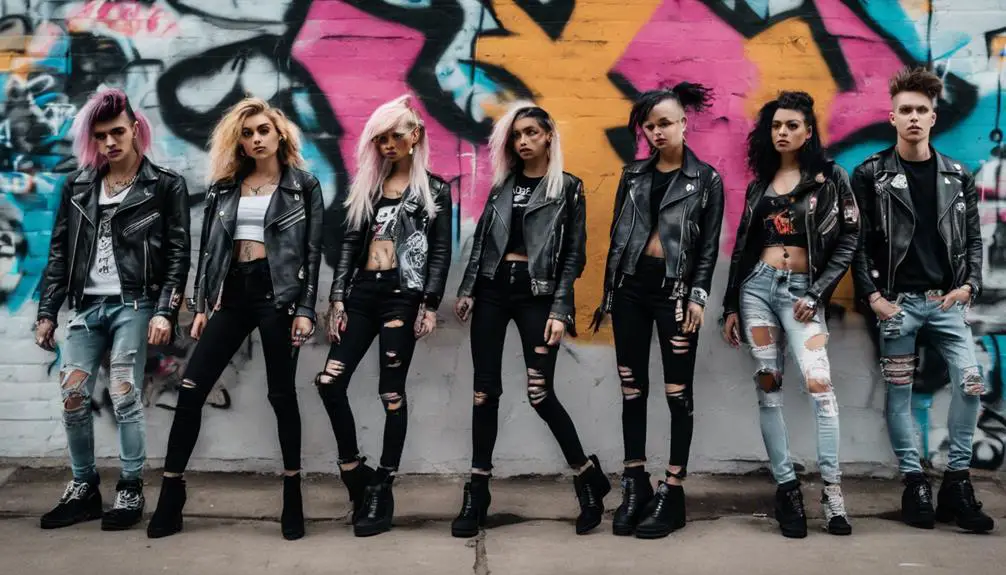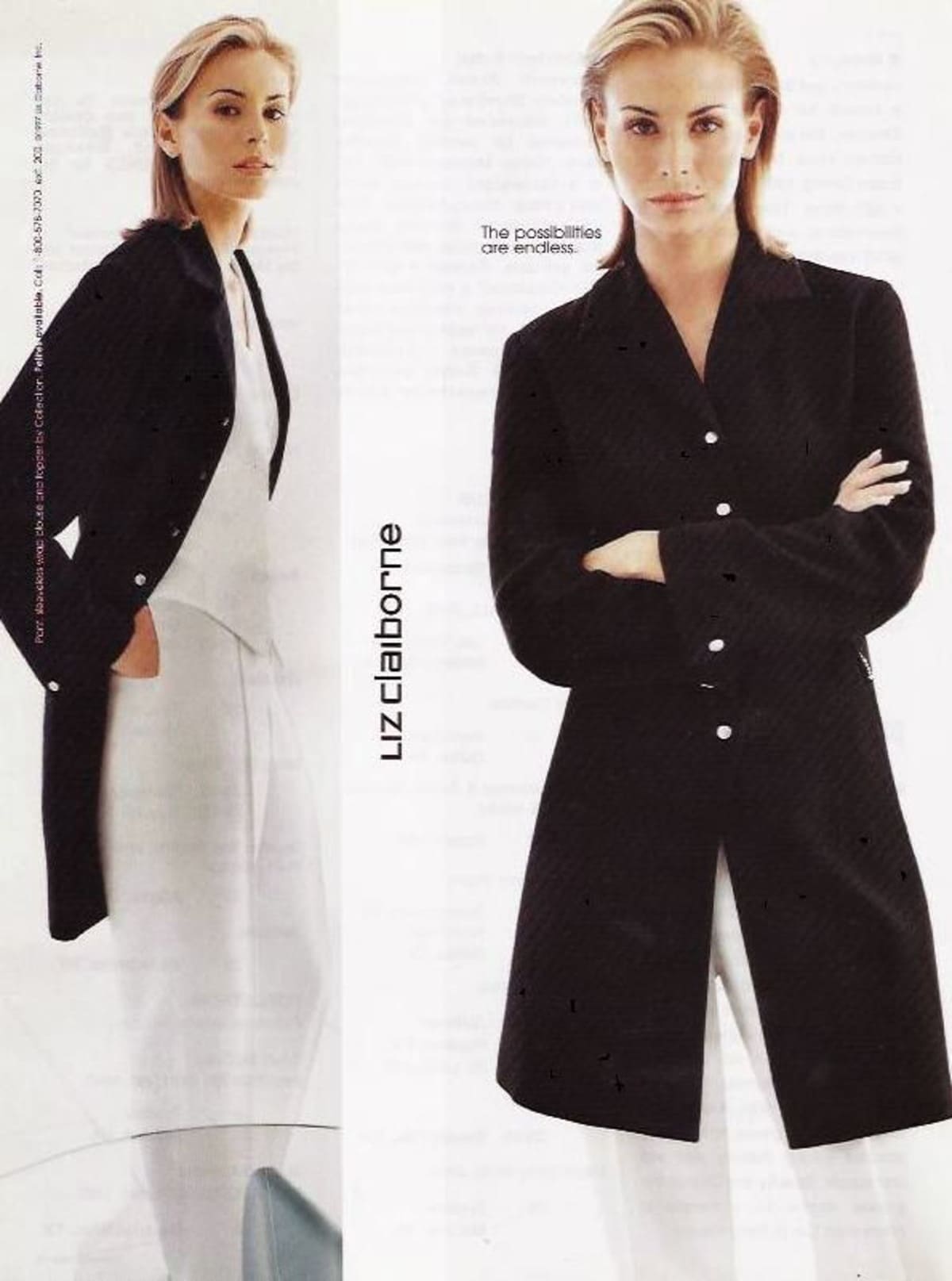Did you know that over 70% of alternative rock fans believe their fashion choices reflect their musical tastes? This statistic highlights the deep connection between style and identity within the genre. As you explore the distinctive elements that make up alt-rock fashion, you'll find a rich tapestry of influences, from grunge to punk aesthetics. Understanding these connections can transform how you view not just the music, but also the culture surrounding it. What specific styles and trends have shaped the alt-rock scene, and how do they continue to evolve today?
Definition of Alternative Rock

Alternative rock, often referred to as "alt-rock," emerged in the 1990s as a distinct genre that challenged mainstream rock norms. It's like that cool kid in school who refuses to follow the crowd! This genre is all about diversity, showcasing a range of sounds and unconventional song structures that often delve into social and cultural commentary. Ever wonder why your favorite songs hit hard? That's the beauty of alternative music!
Alt-rock isn't just one thing; it's a vibrant mix. You've got grunge, Britpop, indie rock, and more. Each subgenre reflects eclectic influences and an experimental spirit that keeps things fresh and exciting. Iconic bands like Nirvana, Radiohead, and R.E.M. played huge roles in shaping this genre. They brought authenticity and raw emotion to the forefront, giving a voice to Generation X's disaffection and desire for something real.
As the 90s rolled on, alternative rock started to gain mainstream success, and suddenly, you had dedicated radio stations and music festivals celebrating its diversity. Isn't it awesome how a bunch of musicians could create a movement? When you listen to alt-rock, you're immersing yourself in a world where every chord and lyric tells a story. So, whether you're blasting Nirvana in your room or humming a catchy Radiohead tune, you're part of a rich musical tapestry. Dive in, explore, and find your favorite sounds! Ready to rock?
Iconic Bands and Artists
When you think of iconic bands in alt-rock, names like Nirvana, Radiohead, and R.E.M. immediately come to mind. These bands didn't just make music; they changed the game. Nirvana, fronted by the unforgettable Kurt Cobain, brought grunge into the spotlight with their groundbreaking album "Nevermind." Remember "Smells Like Teen Spirit"? That song became an anthem for a generation, capturing the spirit of youth and rebellion.
Then there's Radiohead. Their 1997 masterpiece "OK Computer" is often hailed as a landmark in alternative rock. With its experimental sound and themes of technology and alienation, it's influenced countless artists, proving that alt-rock can be deep and thought-provoking.
And let's not forget R.E.M. They blended folk rock with punk influences, crafting hits like "Losing My Religion" in the '80s and '90s. Their sound helped define the alternative vibe of the era, making them legends in their own right.
Pearl Jam also rose from the Seattle scene, enchanting fans with their debut album "Ten," filled with introspective lyrics and themes of social justice. They really knew how to connect with their audience.
Lastly, The Smashing Pumpkins, with their eclectic sound, delivered the critically acclaimed double album "Mellon Collie and the Infinite Sadness." It was a mix of everything, producing chart-topping hits that still resonate today.
Subgenres in Alternative Rock

Subgenres in alt-rock have carved out unique identities that showcase the genre's diversity. Let's explore some of these exciting subgenres that really stand out! Grunge, for instance, kicked off in Seattle and brought us bands like Nirvana and Pearl Jam. Their raw sound and angst-driven lyrics hit hard, especially in albums like "Nevermind" and "Ten." You can't help but feel that energy, right?
Then there's Britpop, which struts in from the UK, turning the tables on grunge with catchy melodies and clever cultural references. Bands like Oasis and Blur defined the '90s with tunes that just stick in your head. You can't help but sing along!
Don't forget about post-rock, which takes a different approach. It's all about those instrumental soundscapes that create a vibe. Bands like Explosions in the Sky and Godspeed You! Black Emperor craft expansive music that takes you on a journey. Who doesn't love a good soundtrack for daydreaming?
And of course, you've got indie rock, which thrives on that DIY spirit. Artists like The Shins and Arcade Fire bring a mix of sounds and styles, often releasing music on independent labels. It's all about being unique!
Lastly, emo combines punk rock elements with super emotional lyrics. Bands like My Chemical Romance and Dashboard Confessional made waves in the early 2000s, sharing heartfelt stories that resonated with many. So, what's your favorite subgenre?
Cultural Influence and Impact
Alternative rock became the anthem for disaffected youth, especially during the '90s, giving a voice to those who felt misunderstood. Think about it: those flannel shirts and combat boots didn't just look cool; they sparked a whole fashion revolution that screamed rebellion! The cultural shift mirrored the evolution of brands like Billabong, which thrived on the spirit of youth and freedom by embracing surf culture and lifestyle products that resonated with this demographic an iconic surf brand. Plus, the rise of independent music scenes showed that you didn't need a big label to make waves—let's explore how all this changed the music world!
Voice for Disaffected Youth
Emerging in the 1990s, alternative rock became the soundtrack for disaffected youth, capturing their struggles and disillusionment with society. You can feel the raw energy in the music, can't you? Bands like Nirvana and R.E.M. voiced the frustrations of a generation, addressing everything from economic instability to existential angst. Their lyrics spoke directly to your heart, making it easy to relate, right?
The alternative scene was a refreshing change, creating a space for kids who felt left out by mainstream culture. It was all about authenticity and self-expression, and that resonated with you. You explored themes of alienation and rebellion through the music, feeling like you weren't alone in your struggles.
Plus, with independent record labels popping up and underground music venues thriving, you found a community that understood you. It was like a secret club where everyone got the same vibe. Alternative rock didn't just change music; it sparked social movements and inspired fashion trends, too. It became a powerful platform for youth rebellion and a voice for those who felt unheard, showing that it's okay to express your discontent. So, what's not to love?
Fashion Trends and Icons
The 1990s grunge movement revolutionized fashion for a generation, blending comfort and rebellion into a unique style that still resonates today. With bands like Nirvana and Pearl Jam leading the charge, flannel shirts, ripped jeans, and combat boots became the go-to look for alternative rock fans everywhere. Who wouldn't want to channel their inner Kurt Cobain or Courtney Love? These icons mixed thrifted finds with high-fashion pieces, proving that style can be both personal and expressive.
But let's not forget the punk roots! The punk aesthetic laid the groundwork, featuring leather jackets, graphic tees, and a DIY attitude that screamed individuality. This anti-establishment vibe is all about standing out and speaking your mind, right?
Today's alternative fashion trends, like e-girl and e-boy styles, take inspiration from these past movements while adding a modern twist. You'll see vibrant colors, bold accessories, and classic rock elements all jumbled together. So, whether you're rocking a vintage band tee or piecing together a unique look, remember that your style is all about you. Immerse yourself, express yourself, and have fun with it! What's your favorite alt-rock look?
Independent Music Scene Growth
As indie artists broke away from mainstream constraints in the 1980s and 1990s, they sparked a vibrant movement that reshaped the music landscape. You might wonder, what's so special about this indie scene? Well, for starters, it gave rise to tons of independent labels that championed artists who didn't fit the typical mold. These labels were all about the DIY ethos, allowing musicians to create and distribute their music on their own terms.
College radio stations played a huge role, blasting alternative rock tracks and helping fans discover fresh sounds. Imagine tuning in and hearing something totally different! Plus, music festivals like Lollapalooza and Coachella popped up, showcasing indie acts and making them household names. This movement wasn't just about music, though. It influenced fashion, visual art, and even social movements, creating a community that celebrated individuality and self-expression.
Fashion and Aesthetic Elements

Alternative rock fashion is all about embracing your unique style and expressing individuality. You'll want to layer up with long-sleeve shirts, graphic band tees, and, of course, those iconic leather jackets. They give you that rugged vibe that screams "I'm here to rock!" Distressed jeans and denim jackets are also must-haves, making your outfit feel effortlessly cool. To enhance your vintage aesthetic, consider incorporating pieces with authentic vintage Champion tags that reflect a rich history in sportswear.
Accessories play a huge role too. Think studded belts, chains, and combat boots to amp up your look. You can't forget about your hair, either! Messy or tousled textures give off an effortless, laid-back feel. It's like you just rolled out of bed, but in the best way possible!
When it comes to colors, dark shades like black and deep red reign supreme. Don't be afraid to throw in some bright colors or patterns—plaid and stripes can really make your outfit pop! This style draws inspiration from legendary rock musicians and movements like punk and grunge, so thrifted or repurposed clothing is a great way to score authentic pieces.
Legacy and Future Trends
You've probably noticed how vinyl records are making a comeback, right? It's like everyone's rediscovering that warm, rich sound of alternative rock, which is totally inspiring modern artists to mix those classic vibes with fresh ideas. Additionally, the resurgence of vintage fashion, especially items like vintage GAP pieces, is allowing fans to express their love for the genre in a stylish way. Plus, with fashion trends borrowing from that alt-rock aesthetic, you can rock those vintage tees while staying in style—how cool is that?
Resurgence of Vinyl Culture
Over the past few years, vinyl culture has seen an impressive resurgence, capturing the hearts of both seasoned collectors and new fans alike. Can you believe that from 2020 to 2021, vinyl sales jumped by 50%? It's like everyone suddenly decided that digital downloads just don't cut it anymore! In 2022, vinyl records even outsold CDs in the U.S. for the first time since the '80s. That's pretty wild, right?
Record Store Day has become a must-attend event, drawing crowds enthusiastic for those special limited editions from their favorite Rock and Roll artists. It's not just about the music; it's about the experience. Those unique album covers and colored pressings are like little treasures, appealing to both nostalgic listeners and new fans alike.
The resurgence of vinyl culture isn't just about records, either. People are dusting off their old turntables and buying vintage stereo systems like it's 1975 again! So, whether you're a die-hard collector or just curious, diving into vinyl can be a fun adventure. What's stopping you from joining the vinyl revolution?
Influence on Modern Genres
The resurgence of vinyl culture isn't just a nostalgic trip down memory lane; it's also a reflection of the enduring influence of alternative rock on modern music. You can see this impact everywhere, from indie rock to pop-punk and emo. Bands like Fall Out Boy and Paramore openly admit they're inspired by alt-rock pioneers, blending those classic sounds into something fresh and exciting.
And guess what? Festivals like Coachella and Lollapalooza are still packed with alternative rock acts, showing just how much these bands resonate with fans across generations. It's a beautiful mix of nostalgia and newness that keeps people coming back for more.
Plus, the DIY vibe that alternative rock champions has sparked a wave of independent artists who value authenticity. This underground scene thrives on creativity and expression, proving that mainstream culture can still embrace the unique.
Even artists like Billie Eilish and Tame Impala are pulling from alternative rock's experimental roots, blending genres, and pushing musical boundaries. So, the next time you spin that vinyl, remember: you're not just listening to music; you're part of a legacy that's shaping the future!
Evolving Fashion Aesthetics
Alternative fashion is experiencing a vibrant revival, drawing heavily from the past while paving the way for future trends. You've probably noticed how 90s grunge is back, right? Oversized flannel shirts and ripped jeans are now staples for many young folks. But wait, there's more! The e-girl and e-boy aesthetics are shining bright, pulling from early 2000s scene culture with their bold hair colors, graphic tees, and layered accessories. It's a mix of nostalgia and fresh expression.
What's really cool is how alternative fashion celebrates individuality. You can express yourself in ways that feel right for you. Thrifted and repurposed clothing are all the rage, letting you create unique looks that totally reject mainstream trends. Plus, the principles of anti-capitalism and inclusivity create a welcoming vibe for diverse identities.
Thanks to social media, platforms like TikTok and Pinterest, you can discover and share ideas with fellow fashion enthusiasts in real-time. So, are you ready to plunge into this colorful world? Embrace your style, be bold, and don't be afraid to stand out!
Frequently Asked Questions
What Are the Characteristics of Alt-Rock?
Imagine a sonic tapestry woven with raw emotion—alt-rock's characterized by diverse band influences and lyrical themes that explore social justice, identity, and rebellion. You'll find unconventional structures and an authenticity that resonates deeply with listeners.
What Does Alt-Rock Sound Like?
Alt-rock sounds diverse, blending melodic influences with raw, emotional instrumentation. You'll find angst-driven lyrical themes that explore personal and social issues, often creating a unique atmosphere that resonates deeply with listeners and encourages introspection.
What Is the Difference Between Prog Rock and Alt-Rock?
While prog rock dazzles with complex compositions and musical experimentation, alt rock thrives on straightforward structures and diverse influences. Each genre's evolution showcases distinct approaches, reflecting unique artistic visions born from different cultural contexts.
What Is Modern Alt-Rock?
Modern alt-rock blends indie influences with diverse sounds, embracing electronic and pop elements. You're likely to find lyrical themes focused on mental health, identity, and social issues, reflecting both personal experiences and broader cultural commentary.




